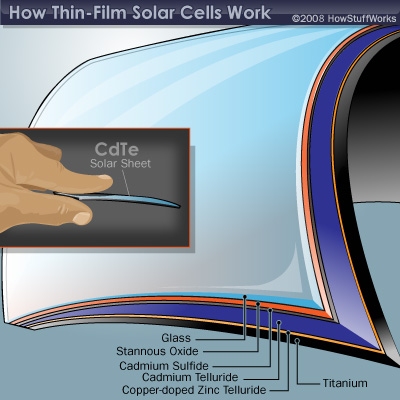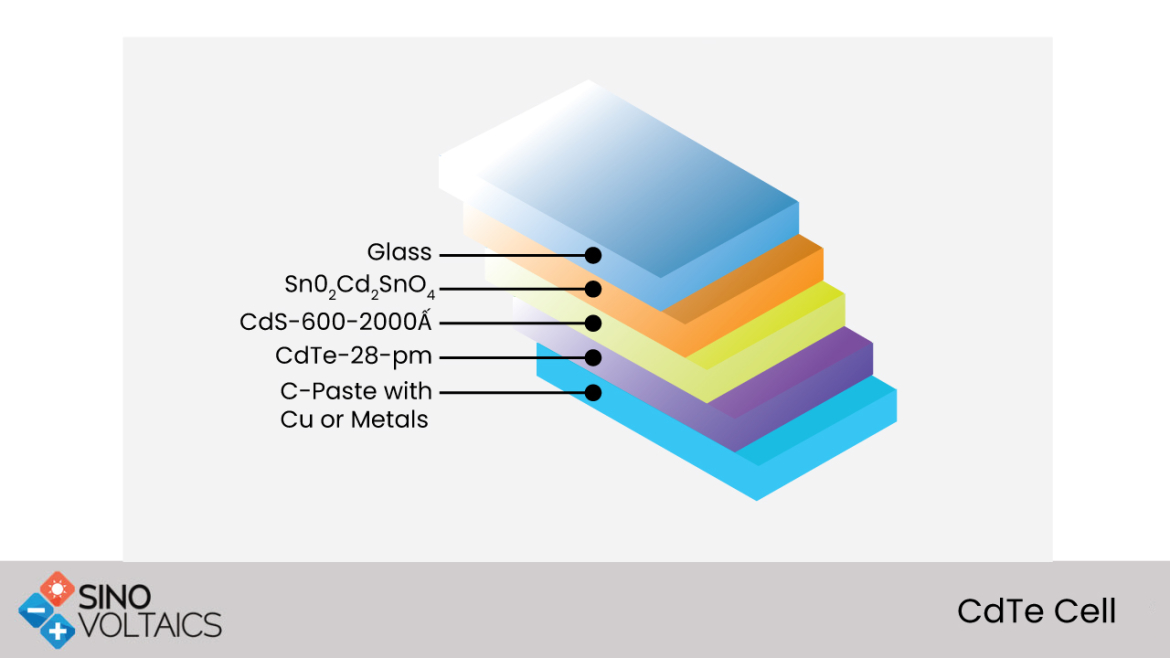Degradation of Solar Cell Performance Due To Microcracks
CZTS Solar Cells
Float Zone Silicon Cells (FZ)
Different Wafer Sizes
Photoelectrochemical Cell
CIGS solar cells
Luminescent Solar Concentrator Cells
Solid State Solar Cells
[...]
 Composition of thin-film cells. Source: SolarFacts and Advice (HowStuffWorks)[/caption]
Composition of thin-film cells. Source: SolarFacts and Advice (HowStuffWorks)[/caption] Due to a sunlight absorption rate that is close to the ideal wavelength, CdTe thin film modules are much more efficient than comparable crystalline silicon produces. Moreover, Cadmium - as a waste and by-product in the mining industry - is a very abundant resource and thus less prone to price fluctuations.This price advantage is however put into perspective by the relatively high difficulty to procure Tellurium, which is as scarce as gold and thus constraining the market potential of CdTe photovoltaics. Apart from that, CdTe is toxic and solar PV modules using CdTe solar cells are thus bound to restriction stipulated by the EU RoHS and partly China RoHS as well as further restrictions due to the mandatory coverage of solar products and their recycling in the EU's WEEE directive.
Due to a sunlight absorption rate that is close to the ideal wavelength, CdTe thin film modules are much more efficient than comparable crystalline silicon produces. Moreover, Cadmium - as a waste and by-product in the mining industry - is a very abundant resource and thus less prone to price fluctuations.This price advantage is however put into perspective by the relatively high difficulty to procure Tellurium, which is as scarce as gold and thus constraining the market potential of CdTe photovoltaics. Apart from that, CdTe is toxic and solar PV modules using CdTe solar cells are thus bound to restriction stipulated by the EU RoHS and partly China RoHS as well as further restrictions due to the mandatory coverage of solar products and their recycling in the EU's WEEE directive.